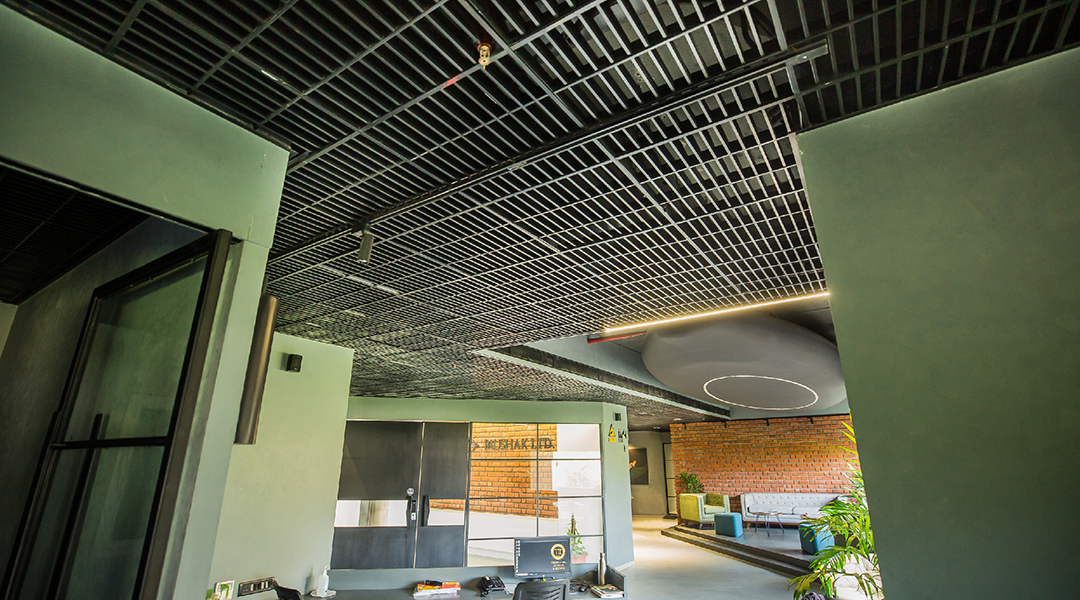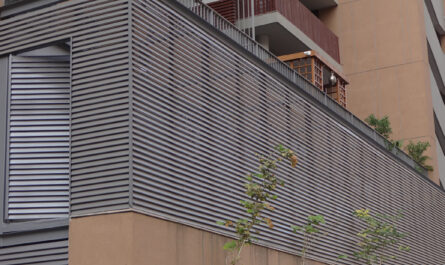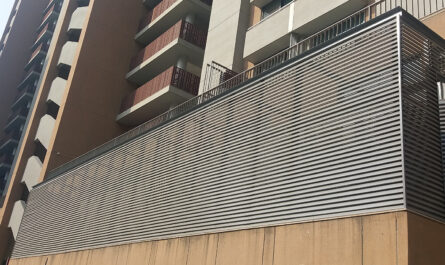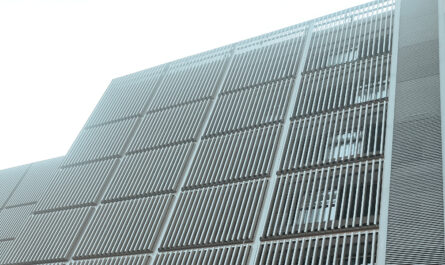Structural coatings on skyscrapers are affected by environmental, time, and usage factors on a continuous basis. It is imperative for any property owner and manager to know about the most common problems found in general and to preserve the building’s integrity, looks, and value. This examination looks at different sorts of common external surface problems and establishes the causes, implications, and appropriate solutions for each.
The water seepage is the single most problematic issue when it comes to external walls. Moisture damage occurs in many different ways from slight discoloration to serious structural damage. Water seeps within the outer surfaces; hence, paint peeling off, efflorescence (white powdery deposits on masonry), and even concrete spalling can be experienced. Continuous wetness issues become even more detrimental to major construction issues in that at times moisture can corrode the metal reinforcements within the concrete or cause even wood rot in buried structures. This always begins with very deceiving, tiny cracks or deteriorating seals around windows or doors giving water that infiltration or passage.
Weather-related deterioration on exterior surfaces forms another significant challenge. It is worth noting: locations with fluctuations in temperature are particularly susceptible to such damage due to the elongated snow tossing and thaw cycle. Ice represents water pushing into a small crack and freezing. Once it freezes, it expands thus tearing apart the crack and then agitates the growth of more substantial problems over time. The intense sun can widen and narrow the materials by repeated expansion and contraction, rendering it highly likely to cause thermal stresses. And thermal stress is corrugated as cracks, warping at joints, or detaching.
UV radiation will degrade over time: fading, paint, or sealant degradation in material surfaces sidelining synthetic materials used in modern construction. Staining atop the surface and discoloration forms major aesthetic issues, which lead to non-uniform façade appearances. It mainly includes biological growth, mineral deposits, and general pollutants from surrounding environments, causing great adversities atop the surface. In urban areas, acid rains will sometimes leave indelible permanent marks on exterior surfaces, algae, and moss averaging so many areas that are very humid in ordinary weather conditions or shaded. Bleeding off metal fixtures or reinforcements can rust and lead to unsightly marks. These will not just mar the building’s beauty but also indicate one or the other underlying problem needing attention.
There are heavier concerns these days regarding the cracking and movement in structures placed on the external side. For instance, there are some fine cracks which only concern the appearance of the structure. There are structural concerns associated with the cracks. An example of such cracks includes settlement cracks found when the building’s foundation settles and damages the exterior surfaces quite visibly. Stress cracks are also produced as thermal expansion and contraction create large expanses in materials. So, it is necessary to know how to distinguish between when to consider it as cosmetic or structural, proving vital as to remediation strategies and prevention of subsequent, more serious problems.
Material degradation occurs over time for all surfaces on the exterior, though problems differ depending on the material type. Concrete may experience carbonation, which is a reaction of carbon dioxide from the air with the material that could lead to corrosion of reinforcement. Metal faces oxidation and corrosion problems, especially in coastal areas where salt enhances deterioration. Wood faces rot, insect infestation, and weathering, all of which must be addressed regularly with maintenance and protection to keep the integrity intact.
One common issue on the exterior is failures of joint and sealant, which act to prevent water intrusion and facilitate proper movement at transitions between various materials and parts of the building.When sealants lose their physical, mechanical, and chemical properties over time, due to UV radiation, temperature changes, and mechanical loading, they are not suited for further application. Failure of the joint seals leads to water penetration into the structure, and by the same token, air comes in, therefore increasing energy consumption, with more frequent inspections of building components scheduled for maintenance.
Failures of paint, coatings, or membranes on exterior surfaces will seriously affect the appearance and protection of those surfaces. Often, issues with moisture or improper surface preparations at the time of coating application lead to paint peeling, bubbling, or cracking. Other causes of premature failures could be attributed to material incompatibility or improper application methods used. Understanding specific causes of coating failures is therefore very important for developing effective solutions to prevent recurrence.
The exterior surfaces, particularly at ground level or in areas of high usage, are subjected to impact damage and physical wear. Vehicle impacts, maintenance equipment, and even vandalism can cause extreme damage to exterior surfaces. Some materials resist impact damage better than others, but all surfaces have to be checked and maintained on a regular basis to address the wear and tear before it escalates into bigger problems.
Environmental deposits and atmospheric pollution can be the source of perpetual maintenance problems on exterior surfaces.Urban soot, auto emissions, and industrial pollutants tend to affect surfaces, often necessitating frequent cleaning to prevent serious staining. Bird droppings, being acidic, can cause etching and staining of surfaces if not cleaned up immediately. Salt exposure, either due to the coastal regions or where de-icing salts are being used, is known to be a further cause of the degradation of the material and surface damages.
Exterior surface problems common among properties are effectively addressed with a strategic approach encompassing inspections, preventive maintenance, and suitable remediation techniques. Property owners and managers should put in place maintenance programs that will include regular cleaning and inspections of major components, with swift repair actions against defects once detected. Such diagnosis is crucial for determining root causes regarding both persistent problems and providing effective long-term remedies.
Knowledge of these common exterior surface issues will go a long way toward assisting property owners and managers to do a better job of maintenance of their buildings. Most of the serious of such problems usually present early warning signs and these signals should allow the use of more appropriate maintenance strategies so that repairs can be made before they reach the stage of consumer-challenging costs. Surveillance and prompt maintenance enabled by the technology of timely intervention shall accord the greatest worth to the continued protection of exterior surfaces and the enhancement of real estate value in terms of aesthetics.




